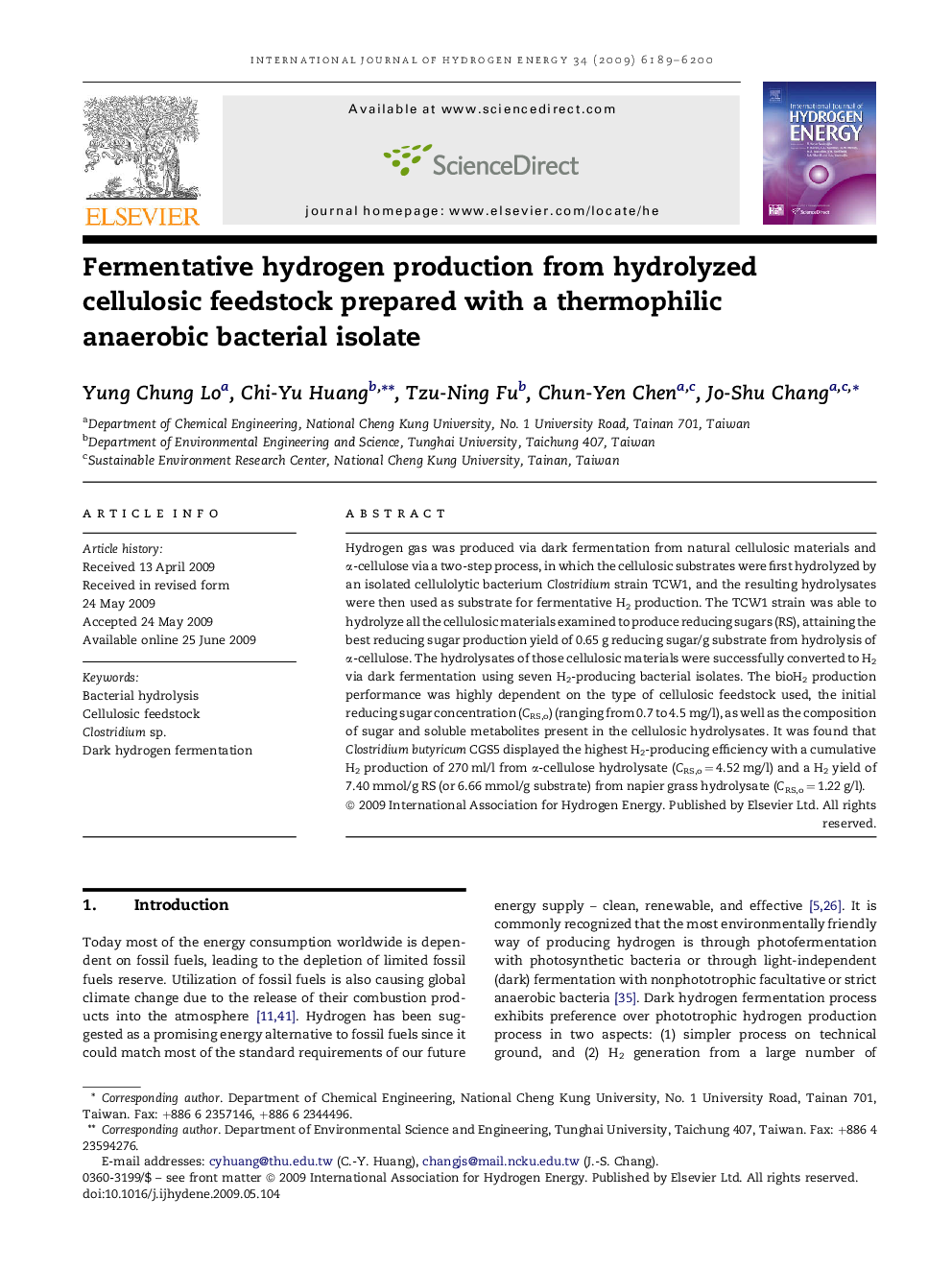| Article ID | Journal | Published Year | Pages | File Type |
|---|---|---|---|---|
| 1283129 | International Journal of Hydrogen Energy | 2009 | 12 Pages |
Hydrogen gas was produced via dark fermentation from natural cellulosic materials and α-cellulose via a two-step process, in which the cellulosic substrates were first hydrolyzed by an isolated cellulolytic bacterium Clostridium strain TCW1, and the resulting hydrolysates were then used as substrate for fermentative H2 production. The TCW1 strain was able to hydrolyze all the cellulosic materials examined to produce reducing sugars (RS), attaining the best reducing sugar production yield of 0.65 g reducing sugar/g substrate from hydrolysis of α-cellulose. The hydrolysates of those cellulosic materials were successfully converted to H2 via dark fermentation using seven H2-producing bacterial isolates. The bioH2 production performance was highly dependent on the type of cellulosic feedstock used, the initial reducing sugar concentration (CRS,o) (ranging from 0.7 to 4.5 mg/l), as well as the composition of sugar and soluble metabolites present in the cellulosic hydrolysates. It was found that Clostridium butyricum CGS5 displayed the highest H2-producing efficiency with a cumulative H2 production of 270 ml/l from α-cellulose hydrolysate (CRS,o = 4.52 mg/l) and a H2 yield of 7.40 mmol/g RS (or 6.66 mmol/g substrate) from napier grass hydrolysate (CRS,o = 1.22 g/l).
